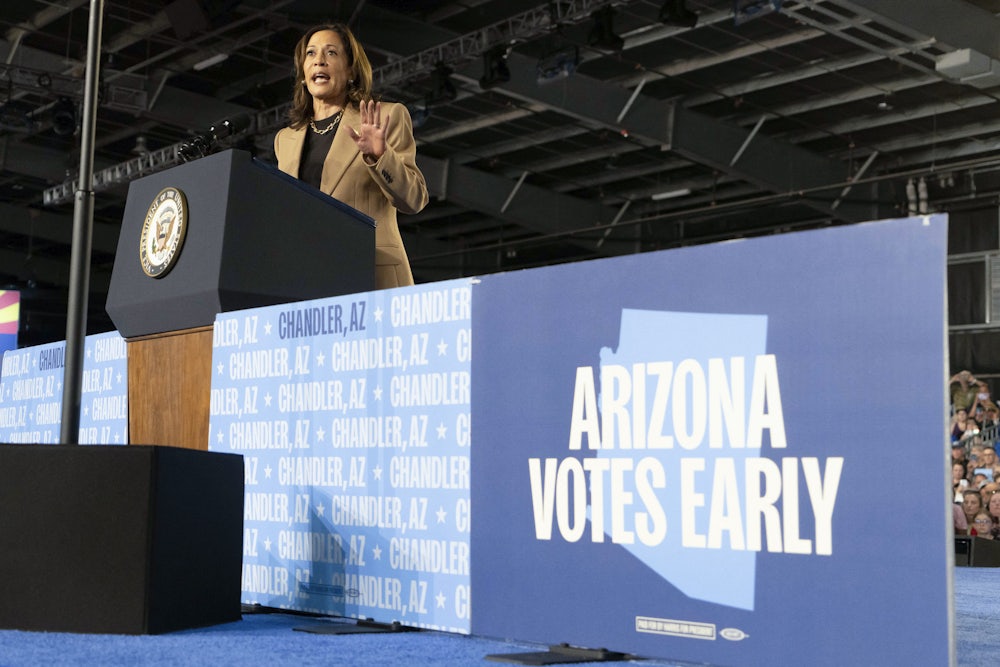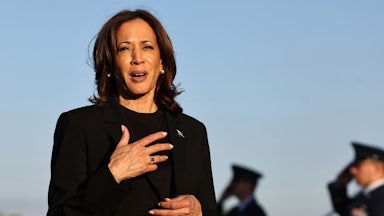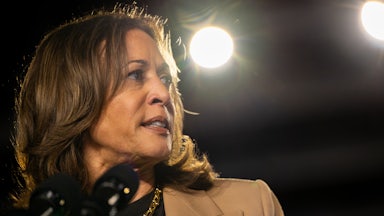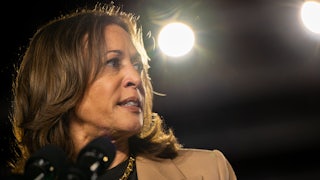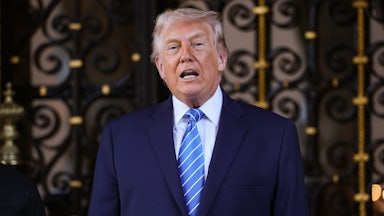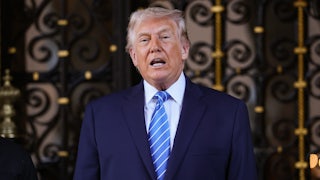Presidential elections have grown steadily more expensive in recent decades, with candidates and their allies raising and spending exorbitant sums in an effort to win the hearts, minds, and votes of Americans. That trend has not flagged in this election cycle: As NBC News first reported this week, Vice President Kamala Harris’s campaign committee and affiliated joint fundraising committee have collectively raised more than $1 billion as of mid-September.
Raising a billion dollars may be significant, but less significant than actually winning the election. Fundraising prowess is no guarantor of electoral success. While Harris has raised money at a rapid clip, especially given her rapid ascension to the top of the Democratic ticket this summer, polling indicates that her contest with former President Donald Trump is neck and neck across several battleground states. Meanwhile, conservative-leaning super PACs have outspent their progressive counterparts so far this election cycle, according to OpenSecrets. With such a close race, Harris’s campaign will need to figure out how best to make use of $1 billion.
“For all of the money that’s raised in American politics for campaigns, there’s not actually a ton of evidence that the spending—once you reach a certain level—makes that much of a difference,” said David Primo, a political science professor at the University of Rochester and an expert in campaign finance. “[But] in a really tight race, if the money is spent well and effectively, it could actually be important.”
Harris had a few daunting challenges upon formally becoming the Democratic nominee in August, including introducing herself as a candidate. Harris’s campaign and affiliated super PACs have flooded the zone with campaign advertisements. In August, Harris’s campaign announced that it was reserving $370 million for ads in swing states between Labor Day and Election Day. But money isn’t everything. Hillary Clinton famously outraised and outspent Trump in 2016, yet still lost the election.
That year was a turning point for campaign spending—the cost of the 2020 election was roughly $4 billion more than the contest four years earlier, according to OpenSecrets. When adjusted for inflation, the cost of the 2024 election has not yet reached 2020 levels, although there are still a few weeks to go before Election Day. But Clinton’s loss shook Democrats’ belief that they could win against Trump without a strong ground game.
“I think [Harris] understands that he still has tremendous appeal for many Americans, and just because she’s outraising him, I don’t think there’s any sense of confidence that, ‘Oh, this is enough to guarantee a victory,’” said Primo. “Trump obviously has name recognition. Trump also has this level of grassroots support.”
Indeed, despite the massive war chest, the Harris campaign continues to portray her as the underdog in the race. While $1 billion is an important symbol of strength for Harris supporters, her campaign will want to ensure that high fundraising numbers do not translate to a sense of complacency among supporters.
While Trump’s fundraising is comparatively low, he has significant support from several prominent conservative donors, including billionaire Elon Musk. He has also been aggressively targeting certain demographic groups, particularly young men. With just over three weeks left in the election, there are a number of Electoral College votes still in play, and late-breaking undecided voters that the Harris campaign is desperate to capture.
While it can be tempting for a campaign to spend excess money on targeted ads, that may not be the most effective method for reaching voters, argued Faiz Shakir, an adviser to Senator Bernie Sanders who worked on his presidential campaigns. The tricky task faced by campaign strategists with access to a seemingly bottomless war chest is figuring out “how best to utilize those dollars such that you’re maximizing the way in which that candidate is being seen or heard by various people,” he said. Shakir recalled the Sanders presidential campaign spending money on sponsoring music festivals, or sending pizza to campaign volunteers.
Against a candidate like Trump, who has deeply motivated voters, Shakir suggested Harris’s campaign should focus on tangible ways to get voters to the polls. “We should assume once again that Trump will have a huge turnout, not because he’s got an awesome field operation but because he’s got a high intensity of loyalty,” he said. “But then you can have that bit of a marginal difference just being able to go reach people, get them to vote, meet them where they’re at, and say, ‘Hey, I’m going to help you get to the polling place.’”
Spending money on a targeted ad that reaches 500,000 people who aren’t committed to casting a ballot may not be as effective as hiring campaign organizers that contact 10,000 people who are more likely to turn out on Election Day, particularly in a race where the outcome will be decided by a few thousand votes.
“When you’re talking about margins, the higher likelihood of votes is how you want to assess the expenditure of a dollar. At this juncture, I don’t think you’re saying dollar for reach—what you want is dollar for ultimate vote,” Shakir continued.
Harris’s campaign employs more than 2,500 staff in 353 offices across the country, an indication of where some of that $1 billion is being directed. Last week, the Harris campaign “knocked over 600,000 doors and made over three million calls through 63,000 volunteer shifts,” according to a campaign staffer.
“Across the battlegrounds, we’re applying an ‘all of the above’ voter contact strategy: reaching voters on the ground, on the airwaves, on digital, and anywhere else voters are. We know in this fragmented media environment, where voters can easily tune political news out, we have to talk to voters as many times and as many ways as we can,” the staffer said.
Harris is also unlikely to spend the entirety of her campaign funds before the election; if she wins, some amount may be saved for reelection efforts, or—in the more immediate term—participating in potential election-related lawsuits.
There are plenty of ways to spread the wealth. But it doesn’t take a billion dollars to know where this election will likely be decided: in a handful of competitive swing states. With the battleground narrowing, the days ticking down, and a finite number of ways that money can plausibly be spent, Harris’s funds might not be enough to fundamentally change the game in her favor within the margins.
